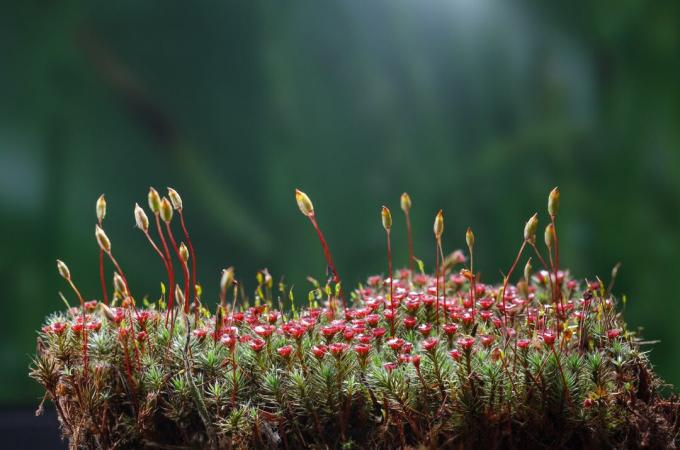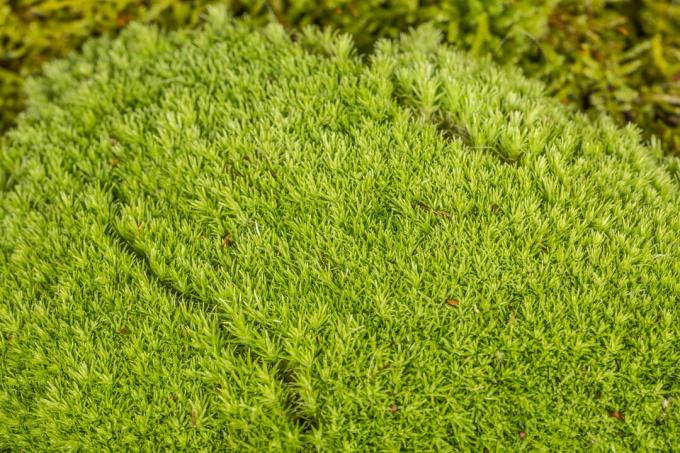Nothing going on without moss - moss can also be a real asset in the garden. You can find out which types are particularly decorative here.

Mosses do not have a good reputation in the garden world: the group of plants is often considered a weed that causes trouble, especially in the lawn, and has to be removed at great expense. In fact, the diverse plants can also be used decoratively in the garden and impress with their easy-care nature. The diversity of the plant group, which is said to have more than 1,000 species in Germany alone, makes it a nice addition to the garden. In the traditional japanese zen gardens one even goes so far that moss is used as the only plant. Here you can find out which types of moss are particularly decorative and therefore suitable for the garden.
contents
- 1. Golden maidenhair moss
- 2. Silver moss
- 3. Fountain liver moss
- 4. White moss
- 5. Sparse Kranzmoos
1. Golden maidenhair moss
Many people think of mosses as small, herbaceous plants. The Golden Maidenhair Moss (
Polytrichum commune) does not fit into this picture at all: The plant can reach a height of up to half a meter - making it one of the giants among the mosses to be found here. The golden maidenhair moss prefers a damp and slightly acidic surface, which is why it is wonderfully suitable for bog beds. The plant proves itself with its red-orange spore containers and its star-shaped leaves it quickly becomes a real eye-catcher and also provides an optimal base for many other bog plants represent.
2. Silver moss
Even if his name is not very well known - the Silbermoos (Bryum argenteum) almost everyone at some point. The small plant is characterized by its special hardness and adaptability, so that it to belongs to the most common mosses in city centers and is preferred in the cracks of asphalt or on rock grows. In the garden, the silvery-green moss is particularly suitable for greening the joints and looks extremely decorative, especially in conjunction with natural stone. The small plant proves to be particularly hard-wearing and can withstand longer dry periods without any problems.

3. Fountain liver moss
Hardly any other moss is as widespread as the fountain liver moss (Marchantia polymorpha). The species occurs almost everywhere from the arctic regions to the rainforest and is considered to be extremely flexible. Well liver moss does not need specific soil and light conditions, nor does it react to air pollution or heavy metals. A certain basic moisture alone must be available for the cultivation of liverwort. In the garden, the species is particularly characterized by its fleshy, green leaves and its small breeding cups, which make the plant a real ornament. However, the plant owes its unusual name to its healing abilities: it used to be used against all sorts of things Liver problems are used, but today it is used to treat fungal diseases due to its strong fungicidal effect used.

4. White moss
Whether in Christmas cribs or flower arrangements - the Weißmoos (Leucobryum glaucum) is one of the most widely used types of moss when it comes to decorative purposes. But the moss type is not only suitable for handicrafts: With its hemispherical, cushion-shaped growth and its light green color, the plant is also particularly decorative in the garden. It is particularly impressive because of its easy-care nature. Since the white moss is one of the damp plants, it can also survive long dry periods undamaged, whereby it turns white. As soon as it comes into contact with water again, the plant regenerates and takes on a fresh green again. However, collecting the white moss in nature is now prohibited because the plant has become rare and is therefore under nature protection.

5. Sparse Kranzmoos
The Sparrige Kranzmoos (Rhytidiadelphus squarrosus), also called Sparriger Wrzelpeter, has already driven many gardeners to despair, because the moss type is particularly popular in lawns. The reason for this lies in the particularly robust way with which the Sparrige Kranzmoos can withstand regular lawn mowing without any problems. In addition, the interesting moss is one of the few types of moss that thrives on both poor and nutrient-rich soils. But you don't always have to be annoyed about the small plant in the lawn - if you are looking for an easy-care lawn substitute, finds with the Sparrigen Kranzmoos not only a beautiful one, but also a particularly robust and step-resistant one Alternative.



